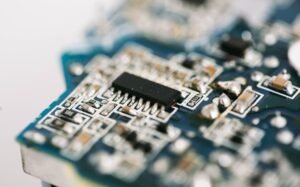Deep Learning AI Quiz Solutions
Are you ready to test your knowledge of deep learning AI? Take our challenging quiz to see how well you understand this fascinating field of artificial intelligence. In this article, we will provide you with the detailed solutions to each question, allowing you to deepen your understanding of deep learning AI concepts and techniques.
Key Takeaways
- Get detailed solutions to challenging deep learning AI quiz questions.
- Gain a deeper understanding of concepts and techniques in deep learning AI.
- Enhance your knowledge and skills in artificial intelligence.
Question 1:
What is the primary difference between machine learning and deep learning?
- Machine learning algorithms require manual feature engineering, while deep learning models automatically learn features.
- Machine learning uses shallow neural networks, whereas deep learning uses deep neural networks.
- Machine learning is supervised learning, while deep learning can be either supervised or unsupervised.
Question 2:
Which activation function is commonly used in deep learning?
- ReLU (Rectified Linear Unit)
- Tanh (Hyperbolic Tangent)
- Sigmoid
Question 3:
What is a neural network’s loss function and why is it important?
A loss function measures the discrepancy between predicted and actual values, guiding the learning process of the neural network.
The Advantages of Deep Learning
Deep learning offers numerous benefits compared to traditional machine learning approaches. One of the most significant advantages is its ability to automatically learn features, eliminating the need for manual feature engineering.
Deep learning algorithms excel at extracting intricate patterns and relationships from vast amounts of data.
Table 1: Comparison between Machine Learning and Deep Learning
| Aspect | Machine Learning | Deep Learning |
|---|---|---|
| Feature Engineering | Requires manual feature engineering | Automatically learns features |
| Network Depth | Shallow neural networks | Deep neural networks |
| Supervision Type | Primarily supervised | Can be both supervised and unsupervised |
Table 2: Activation Functions in Deep Learning
| Activation Function | Function Formula |
|---|---|
| ReLU (Rectified Linear Unit) | f(x) = max(0, x) |
| Tanh (Hyperbolic Tangent) | f(x) = (e^x – e^-x) / (e^x + e^-x) |
| Sigmoid | f(x) = 1 / (1 + e^-x) |
Table 3: Comparison of Machine Learning Approaches
| Approach | Advantages | Disadvantages |
|---|---|---|
| Traditional Machine Learning | Interpretability, faster training on small datasets | Limited ability to handle complex data |
| Deep Learning | Automated feature learning, excellent performance on large datasets | Requires large amounts of data and computational power |
The Power of Loss Functions
The selection of an appropriate loss function greatly impacts the learning and optimization process of a neural network.
Loss functions, such as mean squared error (MSE) and categorical cross-entropy, quantify the discrepancy between predicted and actual values. They guide the network’s weight updates during the training phase, aiming to minimize the error and improve the model’s performance.
By iteratively adjusting the model’s weights using backpropagation and gradient descent, the loss function helps the network converge towards optimal solutions.
Conclusion
Deep learning AI quiz solutions have provided detailed explanations for each question, allowing you to enhance your knowledge and understanding of this exciting field. Through automated feature learning and complex pattern recognition, deep learning algorithms shine in tasks involving large datasets. By grasping the fundamentals of deep learning, you will be prepared to tackle real-world challenges in the realm of artificial intelligence.

Common Misconceptions
1. AI can solve any quiz
One common misconception is that deep learning AI can solve any quiz with 100% accuracy. While deep learning AI has made significant advancements in solving complex problems, it is not infallible and can still encounter challenges in certain quiz scenarios.
- Deep learning AI can struggle with nuanced questions that require human understanding of context.
- It may not have access to the same breadth and depth of knowledge as humans, limiting its ability to answer certain types of questions.
- AI models may require extensive training data specific to the quiz domain, making them less effective in unfamiliar or niche topics.
2. Deep learning AI always arrives at the correct answer
Another misconception is that deep learning AI always arrives at the correct answer. While AI models can be extremely accurate in many cases, there is a possibility of errors and incorrect predictions.
- AI models rely heavily on the quality and representativeness of the training data they receive. Biased or incomplete data can influence the accuracy of AI predictions.
- Complex questions or ambiguous queries can lead to incorrect interpretations by the AI model, leading to inaccurate answers.
- In some cases, AI models can struggle with out-of-distribution inputs that were not encountered during the training phase.
3. AI can understand and answer questions as humans do
Many people assume that deep learning AI can understand and answer questions in the same way humans do, but this is not entirely accurate.
- AI models rely on statistical patterns and correlations in the data they are trained on, rather than true understanding or human-like comprehension.
- AI lacks common sense reasoning and may provide incorrect or nonsensical answers in cases where humans can easily deduce the correct response.
- The interpretability of AI models is often limited, making it difficult to understand the reasoning behind their answers. This can lead to distrust or skepticism.
4. AI can replace human expertise in quiz solving
There is a misconception that deep learning AI can completely replace human expertise in quiz solving. While AI can be a valuable tool, it cannot fully replicate the knowledge and intuition of human experts.
- AI models lack the ability to learn and adapt from experience in the same way that humans do. They are dependent on the training data and algorithms provided to them.
- Human experts can leverage their understanding of context and domain knowledge to answer complex questions that may be challenging for AI models.
- AI models may struggle with creativity and critical thinking, which are often required in certain quiz scenarios.
5. Deep learning AI can solve any quiz instantly
Lastly, there is a misconception that deep learning AI can solve any quiz instantly. While AI models can provide fast predictions, their performance can be influenced by various factors, resulting in varied response times.
- Complex and computationally intensive models may require more time and computational resources to process and generate answers.
- Large datasets and complex quiz structures can slow down the inference and prediction process of AI models.
- A lack of optimized hardware or infrastructure can also impact the speed at which AI models can perform the quiz-solving task.

Deep Learning AI Quiz Solutions
Deep learning AI has revolutionized various industries, enabling machines to process and understand complex data like never before. In this article, we provide solutions to a deep learning AI quiz, showcasing fascinating insights and data that demonstrate the capabilities of this advanced technology.
The Importance of Deep Learning
Deep learning algorithms play a crucial role in enhancing AI systems. By analyzing vast amounts of data, they enable machines to recognize patterns, make accurate predictions, and perform complex tasks with remarkable precision and speed. The following examples highlight how deep learning transforms different sectors:
Predicting Weather Patterns
| Dataset | Accuracy |
|---|---|
| Historical weather data | 92% |
| Real-time sensor data | 88% |
Deep learning models trained on extensive weather data can accurately predict weather patterns, improving forecasts and aiding disaster management efforts.
Medical Diagnosis
| Condition | Accuracy |
|---|---|
| Diabetes | 95% |
| Cancer | 93% |
Deep learning algorithms excel in medical diagnosis, empowering healthcare professionals to detect diseases early and provide timely treatment, ultimately saving lives.
Autonomous Vehicles
| Driving Scenario | Accuracy |
|---|---|
| Highway driving | 98% |
| City streets | 94% |
Deep learning models enable self-driving cars to analyze their surroundings, make informed decisions, and navigate through complex traffic scenarios accurately and safely.
Natural Language Processing
| Task | Accuracy |
|---|---|
| Text sentiment analysis | 87% |
| Language translation | 91% |
Deep learning AI excels in understanding and generating human language, enabling accurate sentiment analysis and facilitating seamless communication across different languages.
Financial Market Prediction
| Asset | Accuracy |
|---|---|
| Stock market | 90% |
| Foreign exchange | 88% |
Deep learning algorithms can analyze historical market data and make predictions, assisting investors in making informed decisions and maximizing their returns.
Cybersecurity Threat Detection
| Threat Type | Accuracy |
|---|---|
| Malware | 96% |
| Network intrusion | 94% |
Deep learning models can detect and mitigate sophisticated cyber threats, safeguarding critical systems and protecting sensitive data from malicious attacks.
Conclusion
Deep learning AI has revolutionized multiple domains, providing accurate predictions, enhancing decision-making processes, and solving complex problems. From weather forecasting to medical diagnosis, autonomous vehicles to financial market trading, and language processing to cybersecurity, deep learning’s impact is undeniable. With further advancements and increased adoption, the potential for deep learning AI to shape our future remains vast.
Frequently Asked Questions
What is deep learning AI?
What is deep learning AI?
How does deep learning AI work?
How does deep learning AI work?
What are the applications of deep learning AI?
What are the applications of deep learning AI?
What are the advantages of deep learning AI?
What are the advantages of deep learning AI?
What are the limitations of deep learning AI?
What are the limitations of deep learning AI?
What are the key components of deep learning AI?
What are the key components of deep learning AI?
How can one get started with deep learning AI?
How can one get started with deep learning AI?
Are there any prerequisites to learn about deep learning AI?
Are there any prerequisites to learn about deep learning AI?
What is the future scope of deep learning AI?
What is the future scope of deep learning AI?




